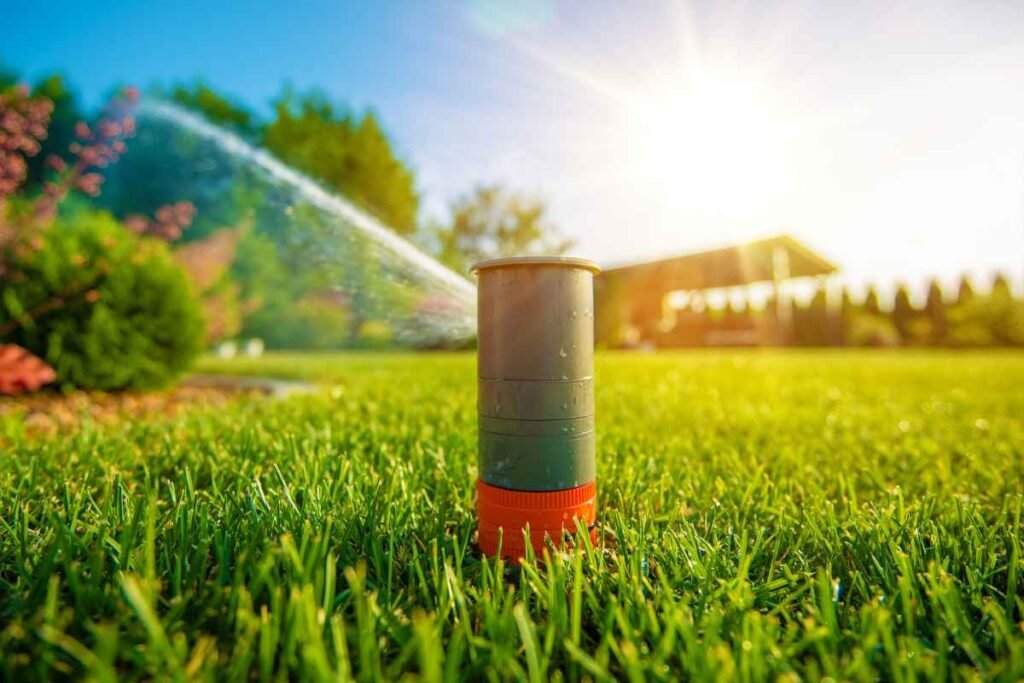Green practices for lawn and garden care is crucial for our planet’s health and biodiversity. Eco-friendly landscaping approaches improve lawns and gardens and lessen landscaping’s environmental impact. These eco-friendly methods renew and respect Earth’s ecosystems through organic fertilization, effective water usage, pesticide-free pest management, and biodiversity enhancement. As gardeners and homeowners balance beauty and responsibility, green techniques are beneficial and important for a sustainable future.
Green Practices for Lawn and Garden Care
Green practices promotes resource cycling, ecological balance, and biodiversity by integrating cultural, biological, and mechanical techniques. This guideline advises landowners and landscaping professionals on green practices for lawn and garden Care. The USDA’s National Organic Program (NOP) recommends these organic land care guidelines (USDA, 1990).
Soil Cultural Practices
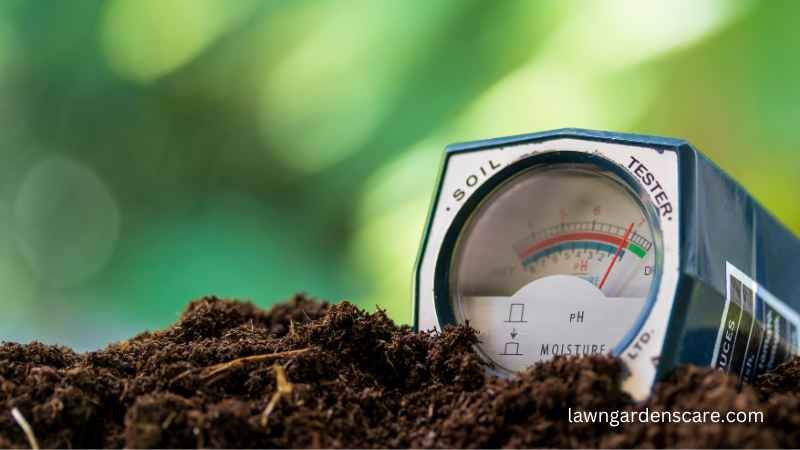
Understanding Soil Health: Soil health is its ability to support plants, animals, and humans. This depends on soil texture, microbial diversity, and nutrient concentration. Tilth, drainage, moisture retention, and nutrient recycling are signs of healthy soil.
Organic Matter Enrichment: Organic matter addition is one of the best ways to improve soil health. Compost, leaves, and well-rotted manure are examples. Organic matter boosts soil structure, nutritional content, microbial activity, and moisture retention.
Cover Cropping: Cover crops like clover or ryegrass in off-seasons minimize soil erosion, suppress weeds, and improve soil fertility. Cover crops offer green manure and organic nutrients when tilled into the soil.
Crop Rotation: Rotating plant types in your garden can improve soil fertility and minimize soil-borne diseases. Over time, plants use and return nutrients to the soil to balance soil fertility.
Conservation Tillage: Soil structure, erosion, and organic matter are protected by little tillage. No-till or reduced-till practices promote soil aeration and nutrient cycling by allowing earthworms and natural creatures to thrive.
Proper pH Management: Proper soil pH is essential for nutrient availability. Regular soil testing can identify pH imbalances, which may require lime (to raise pH) or sulfur (to lower pH), depending on plant needs.
Efficient Water Management: Over-watering causes nutrient loss, soil compaction, and reduced root oxygen availability, while under-watering stresses plants and reduces microbial activity. Maintaining soil moisture with drip irrigation or soaker hoses is possible.
Irrigation Practices
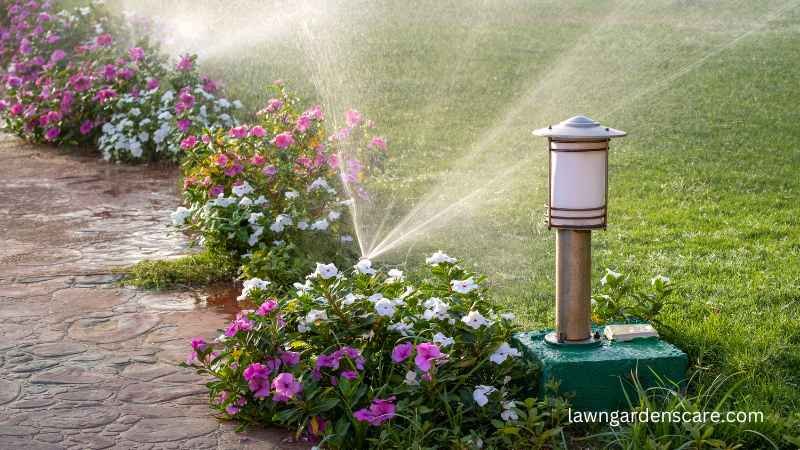
To conserve water and maintain healthy growth, established lawns need to optimize watering. Only water as needed to maintain turf growth and minimize drought stress. This promotes deeper root growth, which makes the lawn drought-resistant and lowers watering. Here are several ways to use water efficiently:
Encourage Dormancy: Reduce irrigation in drought-prone areas to let turf go dormant. This conserves water and helps grass adapt to local climate.
Smart Irrigation Systems: Install weather-sensored irrigation system. Based on weather conditions, these systems automatically alter irrigation frequency and volume to give the lawn the right amount of moisture.
Irrigation Audit: Regular irrigation audits are beneficial. This technique inspects your irrigation system for leaks, misplaced sprinkler heads, and other water-wasting issues. It guarantees your irrigation operations follow water conservation best practices.
Deep and infrequent irrigation: Most grass species are naturally adjusted to occasional drought, thus this approach produces deeper, stronger root systems. Mild stress from low water availability causes grass roots to grow deeper into the soil to find moisture, improving drought resistance.
This “deep and infrequent” irrigation strategy nourishes the lawn and optimizes water use, making it environmentally benign. Monitoring soil moisture and only watering when the top few inches dry out is crucial. This method gives the grass enough water to grow without overwatering, conserving water and eliminating the need for supplemental irrigation.
Water thoroughly: Instead of light daily sprinklings, thoroughly watering the lawn once or twice a week is more beneficial during drought conditions. This deeper watering method helps roots to grow lower for moisture, strengthening and drought-resistant roots.
Consider soil type while scheduling irrigation. Sandy soils drain fast and store less water, therefore turf on sandy soils may need extra watering in hot, dry weather. Sandy soils drain quickly, preventing water from reaching deeper roots unless applied periodically.
Each irrigation cycle should fully saturate the root zone. Apply enough water to permeate the soil to the root system, usually 6–8 inches for most turfgrasses. The soil moisture after watering help to indicate if the water has reached the necessary depth.
Timing and Amount of Watering: Water your lawn and garden early in the morning or late in the evening to minimize evaporation. It’s more efficient to water deeply and infrequently than little and often, which encourages deeper root growth and drought tolerance.
Use of Mulch: Applying mulch around plants reduces water evaporation from the soil, keeps the soil temperature stable, and reduces weed growth. Organic mulches like wood chips or straw can also improve soil quality as they decompose.
Drip Irrigation: Installing a drip irrigation system can significantly reduce water usage by delivering water directly to the base of the plant. This method minimizes wastage by avoiding watering non-target areas like paths or between rows.
Rainwater Harvesting: Collecting rainwater in barrels from downspouts is an excellent way to reduce your dependence on municipal water systems. You can use this water for irrigating your garden during dry spells.
Choosing the Right Plants: Opt for native or drought-resistant plants that require less water. These plants can adapt to the local climate and soil conditions, reducing the need for supplemental watering.
Fertilization Practices

Understanding the Role of Fertilizers: Fertilizers supply soil nutrients like nitrogen, phosphorus, and potassium, for plants. While fertilizers are essential, misuse can cause nutrient runoff into waterways, creating algal blooms and water pollution. Therefore, careful fertilizing is essential for garden health and the environment.
Organic Fertilizers: Compost, manure, and bone meal are organic fertilizers that release nutrients slowly and prevent overfertilization. They feed plants, improve soil structure, and promote beneficial microbes.
Composting: Creating your own compost is a sustainable way to recycle kitchen and yard waste into rich, nutritious material for your garden. Organic matter in compost helps soil retain moisture and nutrients, minimizing fertilizer need. Here’s how to make the most of composting:
- Choosing Your Bin: You can start composting with a simple pile in your backyard or use a compost bin. Bins can be open or closed, with closed bins speeding up the composting process and keeping out pests.
- What to Compost: Include a mix of ‘greens’ (nitrogen-rich materials like vegetable scraps, coffee grounds, and grass clippings) and ‘browns’ (carbon-rich materials like leaves, straw, and paper). Avoid composting meat, dairy, and oils, which can attract pests and cause odor problems.
- Maintenance: Keep your compost aerated by turning it every few weeks to ensure it decomposes evenly. The compost should be moist but not soggy. Adjust the green and brown materials as needed to maintain balance.
- Usage: Use the finished compost to enrich garden beds, improve soil structure, and nourish plants. Compost also helps soil retain moisture, which reduces the need for watering
Mulching: Mulch helps preserve soil moisture, suppresses weeds, and slowly breaks down into plant-available nutrients. As they degrade, organic mulches like wood chips, straw, and leaves enrich the soil.
Returning Mower Clippings: Grass clippings left on the lawn after mowing decompose and replenish soil nutrients. Grasscycling helps the soil to absorb nitrogen from clippings and use it for grass. Low-maintenance turfgrass lawns can get up to 50% of their nitrogen from grass clippings (Qian, et al., 2003). A natural mulch layer from grasscycling minimizes water evaporation from soil surface. Also providing nitrogen, phosphate, and potassium, returning clippings help the lawn stay healthy and strong.
Choose Turfgrass Wisely: Choose turfgrass species that grow well with less nitrogen. The recommended species are fine and tall fescues for turf types. Tall fescues may capture available soil nitrogen through their larger, deeper root systems. They thrive in shady and dry conditions, making them ideal for regions where other turfgrasses struggle.
Green practices like adding dwarf white clover to low-maintenance turf areas can boost soil nitrogen and turfgrass growth. This clover fixes atmospheric nitrogen, enriching the soil by turning nitrogen into a form plants can consume. According to Murphy in 1995, seeding dwarf white clover at 2–4 ounces per 1,000 square feet works well.
Biological Nitrogen Fixation: Another eco-friendly way to increase soil nitrogen is biological nitrogen fixation. Certain clover species and soil cyanobacteria do this natural function. These microbes are unique in converting atmospheric nitrogen into plant-absorbing forms. Clover’s root systems supply nitrogen to the turf, enriching it naturally. This approach provides a continuous nitrogen source and boosts lawn biodiversity, improving its health and resilience.
Liquid Seaweed and Fish Emulsions: These natural products are great alternatives to synthetic fertilizers. They provide a broad spectrum of nutrients and are particularly gentle on plants, making them ideal for use during the growing season.
Controlled-Release Fertilizers: If organic solutions aren’t available, consider controlled-release chemical fertilizers that release nutrients slowly. This minimizes the risk of runoff and provides a steady nutrient supply to plants.
Correct Application Timing: The timing of fertilizer application significantly affects its efficiency. Applying fertilizers when plants are actively growing and can readily absorb the nutrients ensures maximum benefit and minimizes runoff.
Soil Testing: Before applying any fertilizer, it’s advisable to test your soil. This might assist you understand your soil’s nutritional needs and avoid overfertilizing. You can take local extension services or use home testing kits to test your soil.
Overseeding Practices
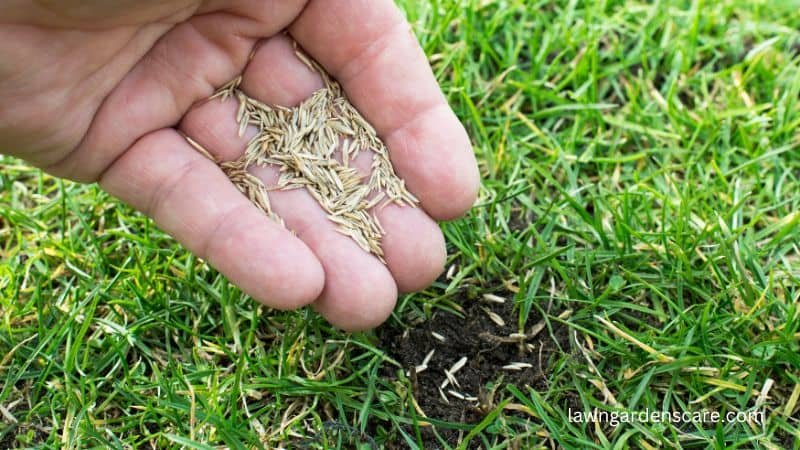
Choosing the Right Seed: Select a seed mix that is appropriate for your climate, soil type, and existing turf. Consider disease-resistant and drought-tolerant varieties to reduce the need for chemical inputs and irrigation.
Select turfgrass seed with endophytes to strengthen the turf against leaf and crown-feeding insects. Many common pests avoid grass because endophytes, helpful fungi that reside inside the plant, provide natural pest resistance. This symbiotic interaction reduces pesticide use and creates a healthier, more sustainable lawn environment. Many modern perennial ryegrass, tall fescue, and fine fescues have endophytes. This genetic modification is intended to organically improve turf durability and insect resistance.
Endophyte-containing seeds must be stored properly to stay effective. Extended exposure to heat and humidity can damage seed endophytes. Store such seeds in cool, dry places to preserve endophytic advantages. Seeds stored in hot, humid environments for months may lose their pest resistance due to endophyte death. Proper storage preserves seeds and boosts turf performance and durability.
Timing: The best time to overseed depends on your climate. Generally, early fall is ideal for cool-season grasses, as the soil is still warm, precipitation is more regular, and there are fewer weeds to compete with. For warm-season grasses, late spring or early summer is preferable.
Soil Preparation: Before overseeding, it’s important to prepare the soil to ensure seed-to-soil contact. This might involve aerating compacted soil, dethatching the lawn if thatch is thicker than half an inch, and mowing your existing lawn to a shorter height than usual.
Verti-cutting (making thin cuts in the turf) helps seeds settle into narrow turf cuts rather than sitting on the surface, removing thatch and improving seed-to-soil contact. A lawn roller or dragging softly presses the seed into the earth, improving contact and stabilizing it against wind and water erosion.
Avoid Disturbing the Soil Surface: Overseed as soon as your lawn begins to thin, it helps fill gaps and prevent weeds. Avoid disturbing the soil surface during overseeding, especially in spring and early summer. Summer weeds like crabgrass and goosegrass thrive in open, disturbed soil, therefore excessive soil disturbance during these seasons might foster their growth.
Consider mild raking or a slit-seeder that creates grooves into the soil to place seeds directly without disturbing the turf to overseed. This strategy ensures seeds have enough soil contact for germination without allowing weed seeds to grow. After sowing, a thin coating of topsoil or compost helps shield the seeds and conserve moisture, improving germination and reducing weed competition.
Seeding: Distribute the seed evenly using a spreader. For small areas, hand-seeding might be sufficient, but for larger lawns, a mechanical spreader ensures more uniform coverage.
Post-Seeding Care: After seeding, lightly rake the area to help seeds make contact with the soil. Apply a thin layer of compost or topsoil to protect the seeds and retain moisture to boost germination. If initial overseeding causes poor seed-to-soil contact, uneven germination, or bare areas, distribute more seed.
Filling gaps and increasing turf density with repeated seeding creates a more uniform and lush lawn. Water the seeded area gently but regularly, keeping the soil consistently moist until the new grass is established. Reduce foot traffic on the newly seeded areas to prevent seed displacement and give the young shoots a chance to grow.
Mowing Practices
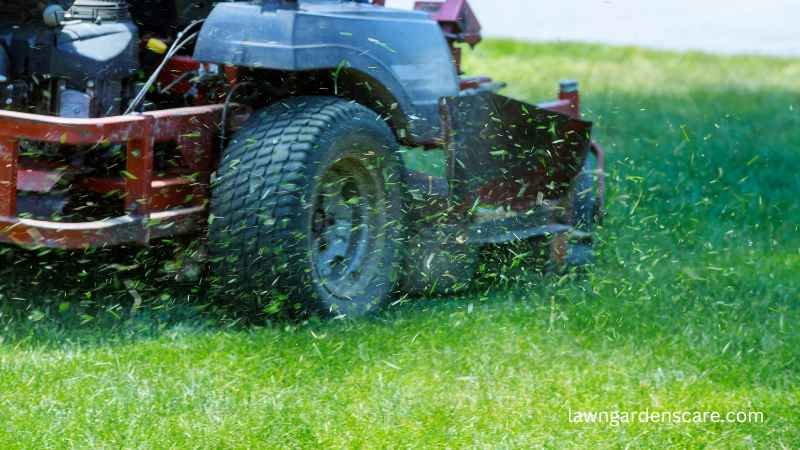
Understanding the Importance of Proper Mowing: Mowing isn’t just about keeping your lawn looking tidy—it’s a vital part of lawn care that affects grass growth, soil health, and biodiversity. Proper mowing practices help to maintain a dense turf that resists weeds, diseases, and environmental stresses. Moreover, these practices can enhance the efficiency of water and nutrient use, reducing the need for chemical inputs.
Mowing Height: Cutting grass at the right height is crucial. Taller grass, 3-4 inches (2.5 to 3 inches in autumn), promotes deeper root growth, which improves drought resilience and lowers watering. Taller grass shadows the soil, minimizing weeds and moisture loss.
Adjusting the mowing height to 2½ to 3 inches in autumn will improve the health and appearance of your grass. By lowering the blades to this height, you can:
- Increase Shoot Density
- Promote Root Growth
- Reduce Leaf Lodging and Snow Mold Diseases:
- Enhance Debris Removal
Sharp Mower Blades: Always use sharp mower blades. Dull blades tear the grass, causing jagged edges that are susceptible to pests and diseases. Sharp blades cut cleanly, which reduces stress on the grass and promotes healthier growth. It’s recommended to sharpen mower blades at least once a season or after about 25 hours of use.
Mulching Grass Clippings: Instead of bagging grass clippings, leave them on the lawn to decompose. This practice, known as grasscycling, returns nutrients, especially nitrogen, back to the soil, acting as a natural fertilizer. It also reduces yard waste and the need for synthetic fertilizers, promoting a more sustainable lawn care routine.
Alternate Mowing Patterns: Avoid mowing in the same direction or pattern each time. Alternating your mowing pattern prevents the grass from being pressed in the same direction repeatedly, which can help avoid soil compaction and promote more upright and uniform grass growth.
Proper Timing: Do not mow when the grass is wet or during the heat of the day. Wet grass can clog your mower and result in an uneven cut, while mowing in intense heat can stress the grass and lead to dehydration. Early evening is often the best time to mow, as it allows the grass to heal overnight before the full heat of the next day.
Reducing Mowing Frequency: Whenever possible, reduce the frequency of mowing. Allow the grass to grow slightly longer than usual, which can promote biodiversity and provide habitat for beneficial insects. This practice not only saves energy and reduces emissions from gas-powered mowers but also lessens the physical disturbance to your lawn.
Natural Pest Control
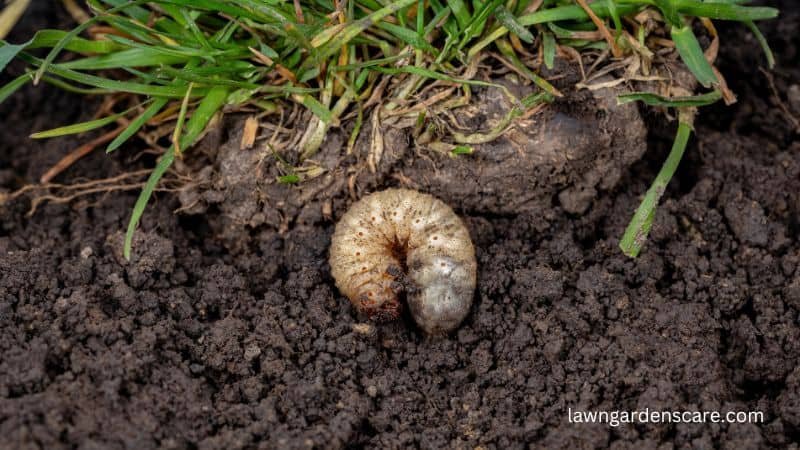
Natural pest control practices reduce the use of chemical pesticides, promoting a healthier environment for both plants and wildlife. Here are effective natural pest control methods:
Biological Control: This method involves using natural enemies of pests, such as ladybugs to combat aphids, or introducing nematodes that target soil-borne insect larvae.
Companion Planting: Certain plants can repel specific pests when planted near vulnerable crops. For example, marigolds are known to deter nematodes and tomato hornworms, and garlic can repel aphids.
Physical Barriers: Using netting, row covers, or collars around plants can physically prevent pests from reaching the plants. This method is especially effective against larger pests like birds and mammals.
Homemade Sprays: Natural sprays made from ingredients like garlic, neem oil, or soap can deter pests. You have to apply these sprays more frequently than chemical pesticides and after rain.
Manual Removal: Regularly inspecting plants and manually removing pests or infested parts can keep pest populations in check without the need for harmful chemicals.
Weed management

Weeds can rob your plants of vital nutrients, water, and light, compromising the health and beauty of your garden. Employing green practices in weed management to reduce environmental impact while keeping gardens thriving.
Understanding Weed Growth: Understanding the types of weeds that are common in your area. Weed characteristics, growth habits and life cycles can help in formulating an effective management strategy.
Say No To Weed Seed: Ensure that composts, manures, topsoil, and other additions are free of weed seeds to avoid accidental weeding in your property. This requires careful material sourcing and management. Read labels carefully when buying seed mixtures, especially turfgrass.
Choose commercial seed combinations and blends with little or no weed seed. Premium seeds cost more, but they save time and effort in weed management. Consult local agricultural extensions or gardening centers for advice on sustainable seed and soil amendment solutions for local environmental conditions.
Mulching: Applying a layer of organic mulch around your plants can inhibit weed growth by blocking sunlight necessary for weeds to germinate. Mulch also helps retain soil moisture, which benefits your plants and reduces the likelihood of weed success.
Dense Planting: Minimizing open spaces in your garden by planting densely or using ground covers can leave less room for weeds to establish. This approach beautifies your space and creates a natural barrier against weed invasion. In areas where these remedies fail, try organic pre-emergent herbicides such corn gluten meal. This natural substance prevents weed seed germination without the environmental impact of synthetic herbicides.
Prevent build-up of weed populations: Preventing weeds from maturing and reproducing through seed or vegetative propagation is vital. Regularly inspecting your garden and manually removing weeds can be very effective, especially if done consistently. Pulling weeds just after watering or rain when the soil is moist makes the task easier, as roots come out more completely.
Shallow cultivation: Periodic shallow cultivation, or “scratching” the soil surface of your planting beds, will help reduce weeds. This method involves hoeing or cultivating the top layer of soil lightly. The method disrupts immature weed development without disturbing the soil structure or bringing dormant weed seeds to the surface to germinate.
Shallow cultivation works best when weeds are tiny and have weak roots. It can cut weeds below the soil line, preventing photosynthesis and killing them. This approach should be used carefully to avoid injuring desired plant roots.
Shallow cultivation within your garden maintenance routine can reduce the need for more intense weed control. This simple tool, together with mulching and correct planting, can greatly improve the health and beauty of your garden beds.
Natural barriers and edges: Natural barriers and boundaries help control weeds in your garden or landscape. These barriers prevent weed roots and seeds from entering cultivated areas by physically obstructing them. Here are several methods to implement natural barriers:
- Root Barriers: Installing root barriers involves placing a physical barrier in the soil, such as heavy-duty plastic or metal sheets, which prevents invasive weed roots from penetrating into your garden beds or lawns.
- Edging Materials: Using edging materials like stones, bricks, or specialized edging strips can define clear boundaries between different areas of your yard. This not only adds aesthetic appeal but also acts as a physical deterrent for weeds crossing from one area to another.
- Natural Ground Covers: Establishing ground covers such as creeping thyme or sedum can cover the soil, reducing the space available for weeds to establish. These plants provide a thick mat that weeds struggle to penetrate.
Boiling Water: A non-chemical method of killing weeds is pouring boiling water directly onto the weed. This method is immediate and effective, especially for weeds growing through cracks on pathways or driveways.
Natural Herbicides: If manual methods are too labor-intensive, consider using natural herbicides. Vinegar, salt, and soap mixtures can be effective herbicides that don’t carry the environmental load of synthetic chemicals. However, they should be used sparingly and with caution, as they can affect the soil and desirable plants.
Soil Health: Enhancing your soil’s health through regular additions of organic matter can suppress weed growth naturally by promoting vigorous plant growth. Healthy, fertile soil supports the plants you want and is less hospitable to weeds.
Proper Watering Techniques: Avoiding overhead sprinkling and using soaker hoses or drip irrigation can reduce water on weed-prone areas, directing it to the root zones of desirable plants instead. This targeted watering discourages weed germination and growth.
Increase Biodiversity
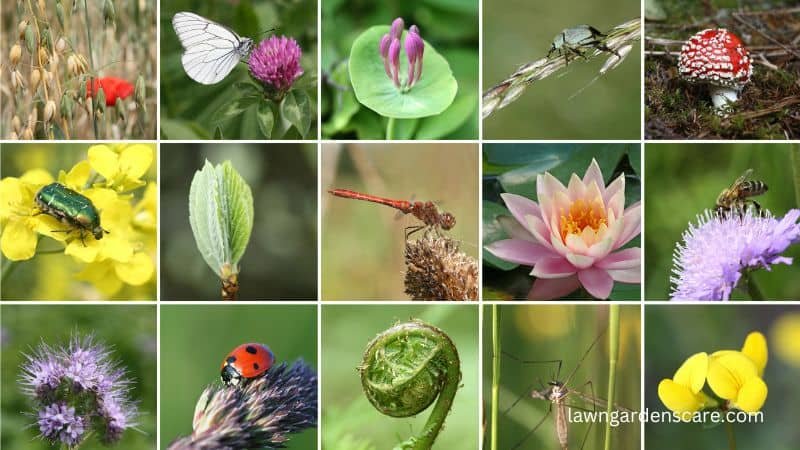
Biodiversity refers to the variety of life in a particular habitat or ecosystem. In a garden setting, this includes everything from the plants and insects to the birds and soil organisms. A biodiverse garden is more resilient to pests, diseases, and extreme weather, reducing the need for chemical interventions. Furthermore, diverse ecosystems can improve soil health, reduce erosion, and even contribute to better crop yields.
Plant a Variety of Species: Incorporating a mix of plant species not only enhances the visual appeal of your garden but also supports a wider range of wildlife. Include native plants, which are adapted to the local climate and soil conditions, and are particularly beneficial for native wildlife. Consider varying plant heights, colors, and types (such as shrubs, trees, and flowers) to attract different insects and birds.
Create Habitats: Structures like birdhouses, bee hotels, and butterfly gardens can attract and support various species. Leaving a part of your garden a little wild, with piles of leaves or a wood stack, can provide crucial shelter for insects and small mammals.
Use Organic Practices: Avoiding synthetic pesticides and fertilizers and opting for organic methods can significantly boost your garden’s biodiversity. Organic practices enhance soil health, promoting a healthy microbiome that supports plant growth and attracts a diverse array of insects and other organisms.
Encourage Beneficial Insects: Beneficial insects such as ladybugs, bees, and butterflies play critical roles in pollination and pest control. You can attract these beneficial species by planting a range of flowering plants that provide nectar and pollen throughout the growing season.
Maintain a Seasonal Balance: Plan your garden so that it provides interest and sustenance throughout the year. Having plants that bloom and bear fruit at different times of the year can ensure that there’s always a food source available for different creatures, supporting a stable ecosystem.
Water Sources: Adding a water feature, even something as simple as a birdbath or a small pond, can attract birds, insects, and other wildlife. Ensure the water source is safe and accessible, with shallow edges or stones where smaller creatures can perch.
Last Words
Adopting green practices in lawn and garden care helps create more resilient and sustainable landscapes. Gardeners may improve their outdoor spaces while reducing their environmental effect by using organic fertilizer, water conservation, and natural pest management. These methods provide lush, bright gardens and lawns while protecting local species, reducing pollution, and improving the earth. As we adopt eco-friendly methods, we are helping create a greener, more sustainable planet one garden at a time.

